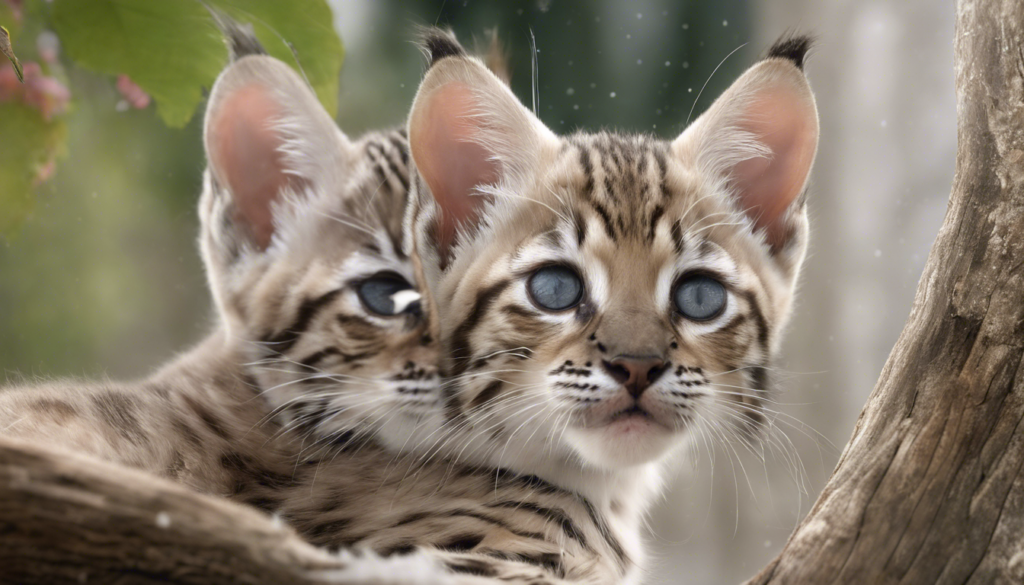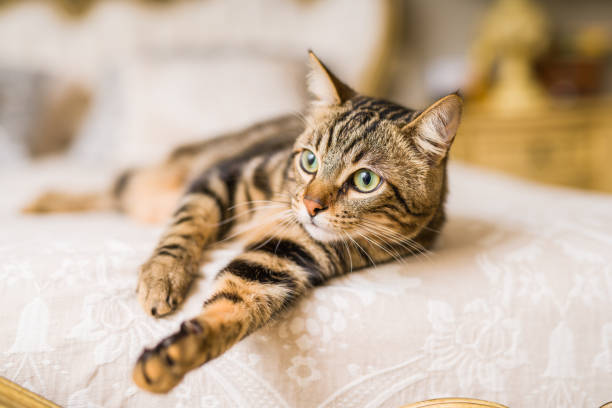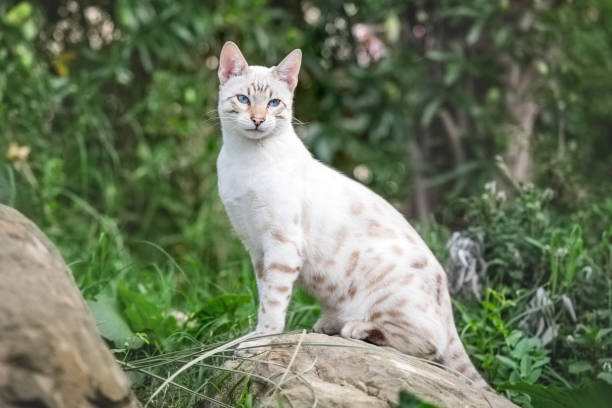how long do bengal cats get typically reach full maturity in terms of size between 18 months and 2 years, although some may continue to grow slightly longer. A healthy adult Bengal usually weighs between 3.6 kg and 6.8 kg, with males being larger than females.
Bengal Cat Growth Stages
- Kitten Stage (0-6 months):
- Weight: Starts at about 250 grams at 2 weeks, doubling every two weeks.
- Milestones: Kittens open their eyes around 2 weeks and begin weaning at 3 weeks. By 2 months, they are fully weaned and can be adopted.
- Juvenile Stage (6-12 months):
- Behavior: High energy, playful, may start to display more independence.
- Adolescent Stage (1-2 years):
- Development: Males may become sexually mature; spaying/neutering is recommended.
- Adult Stage (2-7 years):
- Full Size: Achieve full height and weight.
- Senior Stage (7+ years):
- Activity: May slow down but can remain playful.
Influencing Factors
- Genetics: The size can vary based on the lineage.
- Health: Parasites or diseases can stunt growth.
- Nutrition and Exercise: A balanced diet and regular activity are crucial for healthy development.
Expected Weights and Measures at Key Ages
- 8 weeks: 1-1.8 kg, 15-20 cm tall, 18-23 cm long
- 3 months: 1.8-2.2 kg, 17.5-22.5 cm tall, 20-25.5 cm long
- 6 months: 2.7-5.4 kg, 20-25.5 cm tall, 25.5-30.5 cm long
- 1 year: 4.5-6.8 kg, 28-35.5 cm tall, 35.5-40.5 cm long
- 2 years: 4.5-6.8 kg, 33-38 cm tall, 40.5-45.5 cm long
This framework provides a clear understanding of Bengal cat growth and important developmental milestones! If you have more specific questions, feel free to ask

how long do bengal cats get?
How Long Do Bengal Cats Get Bengal cats, known for their striking appearance and playful nature, typically reach full maturity between 18 months and 2 years of age. Once fully grown, these cats usually weigh between 3.6 kg and 6.8 kg (8 to 15 lbs), with males generally larger than females.
In terms of height, adult Bengals can range from 33 cm to 38 cm (13 to 15 inches), and their length can reach up to 45.5 cm (18 inches). While they may not be significantly larger than an average domestic cat, their muscular build and wild ancestry give them a unique, impressive presence. Understanding the size and growth stages of Bengal cats is essential for prospective owners to ensure proper care and environment for their energetic companions.
The first moments with your Bengal kittens
The first moments with your Bengal kittens are truly special and set the tone for their development. From the moment you bring them home, these playful little explorers are full of curiosity and energy. Initially, they will rely on you for warmth and comfort, as they are still learning to navigate their new environment.
How Long Do Bengal Cats Get At around two months old, they begin to explore independently, showcasing their adventurous spirit. Engaging with your Bengal kitten through gentle play and positive reinforcement during this time fosters a strong bond and helps with their socialization. Providing a safe space, quality food, and plenty of interaction is crucial for their growth and well-being. Embracing these early moments can create a lasting foundation for a joyful and fulfilling relationship with your Bengal cat.
Can a Bengal cat live for 20 years?
How Long Do Bengal Cats Get While the average lifespan of a Bengal cat is typically around 12 to 16 years, some Bengals can live up to 20 years or even longer with proper care. Factors such as genetics, diet, regular veterinary check-ups, and a safe environment significantly influence their longevity. Maintaining a healthy lifestyle through a balanced diet, exercise, and preventive health care can help ensure your Bengal lives a long, happy life. Regular attention to their needs and prompt medical care when issues arise can also contribute to a longer lifespan.

How old is the oldest Bengal cat?
The oldest recorded Bengal cat lived to be around 18 years old. While it’s not common for Bengals to reach such an advanced age, with proper care, some can live into their late teens.How Long Do Bengal Cats Get The key factors contributing to a longer lifespan include genetics, diet, regular veterinary check-ups, and a loving environment. If you’re considering adopting a Bengal, focusing on their health and well-being can help them thrive for many years.

Is 13 old for a Bengal cat?
At 13 years old, a Bengal cat is considered a senior. While this age is not unusually old for a Bengal, it does mean that they may start experiencing age-related changes. Many Bengals can live well into their late teens with proper care. As they age, it’s important to monitor their health closely, provide a balanced diet, and ensure regular veterinary check-ups to address any potential issues early. With attentive care, a 13-year-old Bengal can still enjoy a happy and active life!
Summary
How Long Do Bengal Cats Get Bengal cats are playful, energetic felines that typically reach full maturity between 18 months and 2 years. They usually weigh between 3.6 kg and 6.8 kg when fully grown, with males generally larger than females. The growth stages include a kitten stage (0-6 months), a juvenile stage (6-12 months), an adolescent stage (1-2 years), and an adult stage (2-7 years), followed by a senior stage (7+ years).
In their early days, Bengal kittens are completely dependent on their mother, becoming more independent as they grow. Key milestones occur at 2 months when they can be adopted and begin exploring, and by 3 months, they look like tiny adults and start learning their names and simple commands.
Factors affecting their growth include genetics, diet, exercise, and overall health. While the average lifespan is 12-16 years, some How Long Do Bengal Cats Get can live into their late teens or even reach 20 years with proper care. Overall, understanding these stages and needs is essential for prospective Bengal cat owners to ensure a healthy and fulfilling life for their pets.